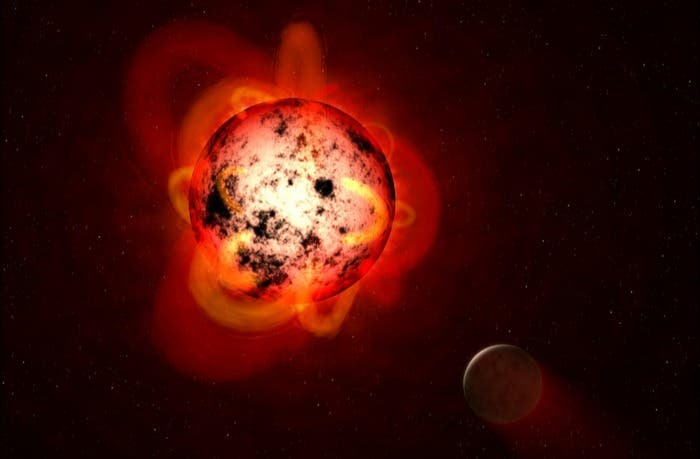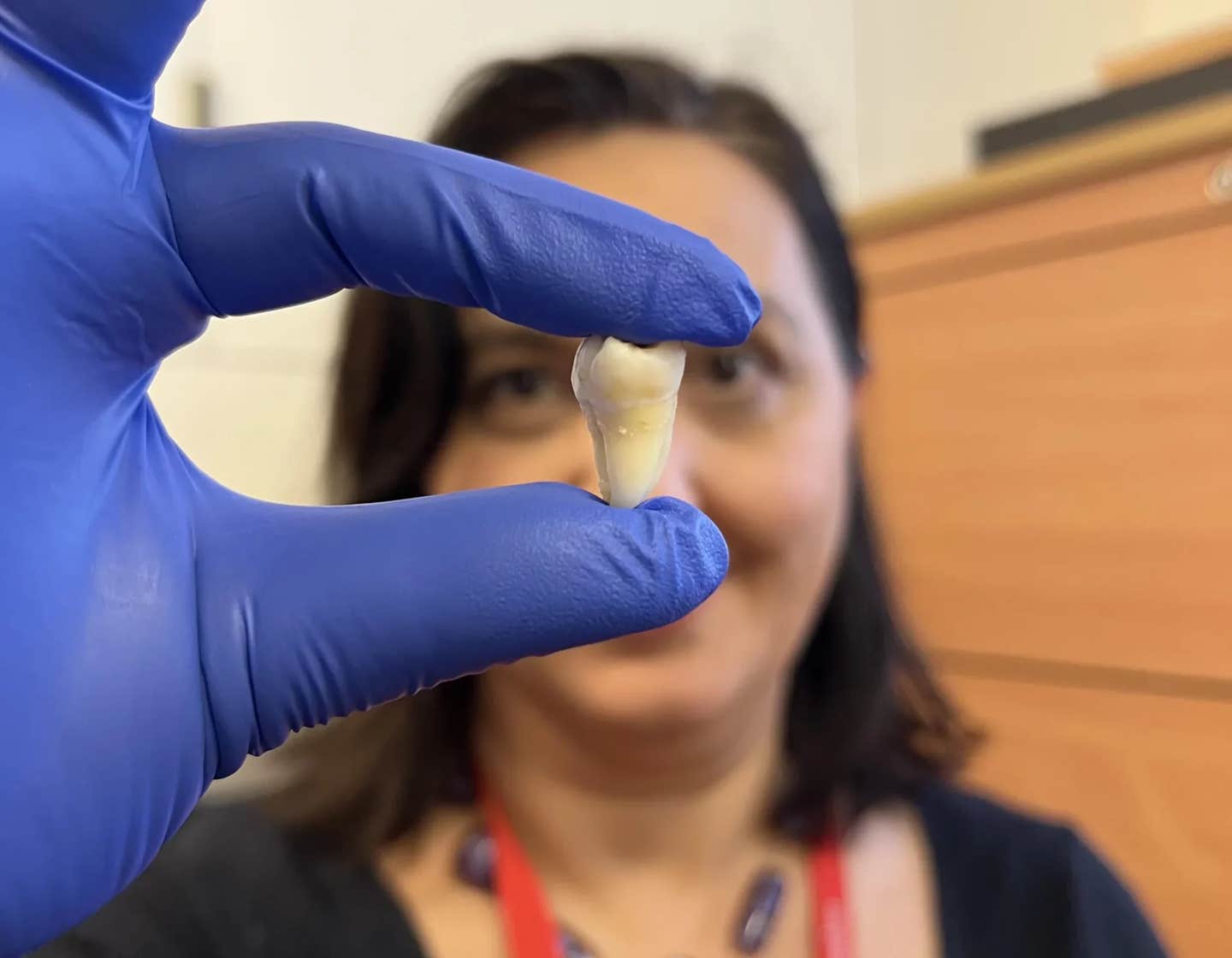Scientists make major discovery in the search for life on other planets
An Earth-like planet orbiting an M dwarf — the most common type of star in the universe — appears to have no atmosphere at all.

[Oct 22, 2022: Jules Bernstein, University of California - Riverside]
Illustration of a red dwarf star orbited by a hypothetical exoplanet. Red dwarfs erupt with intense flares that could strip a nearby planet's atmosphere over time, or make the surface inhospitable to life as we know it. (CREDIT: NASA/ESA/STScI/G. Bacon)
An Earth-like planet orbiting an M dwarf — the most common type of star in the universe — appears to have no atmosphere at all. This discovery could cause a major shift in the search for life on other planets.
Because M-dwarfs are so ubiquitous, this discovery means a large number of planets orbiting these stars may also lack atmospheres and therefore are unlikely to harbor living things.
The work that led to the revelations about the no-atmosphere planet, named GJ 1252b, are detailed in the Astrophysical Journal Letters.
This planet orbits its star twice during the course of a single day on Earth. It is slightly larger than Earth, and it is much closer to its star than Earth is to the sun, making GJ 1252b intensely hot as well as inhospitable.
Related Stories
“The pressure from the star’s radiation is immense, enough to blow a planet’s atmosphere away,” said Michelle Hill, UC Riverside astrophysicist and study co-author.
Earth also loses some of its atmosphere over time because of the sun, but volcanic emissions and other carbon cycling processes make the loss barely noticeable by helping replenish what is lost. However, in greater proximity to a star, a planet cannot keep replenishing the amount being lost.
In our solar system, this is the fate of Mercury. It does have an atmosphere, but one that is extremely thin, made up of atoms blasted off its surface by the sun. The extreme heat of the planet causes these atoms to escape into space.
To determine that GJ 1252b lacks an atmosphere, astronomers measured infrared radiation from the planet as its light was obscured during a secondary eclipse. This type of eclipse occurs when a planet passes behind a star and the planet’s light, as well as light reflected from its star, is blocked.
The radiation revealed the planet’s scorching daytime temperatures, estimated to reach 2,242 degrees Fahrenheit — so hot that gold, silver, and copper would all melt on the planet. The heat, coupled with assumed low surface pressure, led the researchers to believe there’s no atmosphere.
Even with a tremendous amount of carbon dioxide, which traps heat, the researchers concluded GJ 1252b would still not be able to hold on to an atmosphere.
“The planet could have 700 times more carbon than Earth has, and it still wouldn’t have an atmosphere. It would build up initially, but then taper off and erode away,” said Stephen Kane, UCR astrophysicist and study co-author.
M dwarf stars tend to have more flares and activity than the sun, further reducing the likelihood that planets closely surrounding them could hold on to their atmospheres.
“It’s possible this planet’s condition could be a bad sign for planets even further away from this type of star,” Hill said. “This is something we’ll learn from the James Webb Space Telescope, which will be looking at planets like these.”
Folded and binned two-sector TESS lightcurve (blue points) with the median model plotted in black. Residuals (data minus model) are shown in the lower panel. (CREDIT: Astrophysical Journal Letters)
Hill’s work on this project was supported by a grant from the Future Investigators in NASA Earth and Space Science and Technology program.
The research was led by Ian Crossfield at the University of Kansas. It included scientists from UC Riverside as well as NASA’s Jet Propulsion Laboratory, Caltech, University of Maryland, Carnegie Institution for Science, Max Planck Institute for Astronomy, McGill University, University of New Mexico, and the University of Montreal.
Spitzer 4.5 μm photometry and secondary eclipse fit (top) and residuals to the fit (bottom). The photometry is shown after detrending for systematic effects, combining the photometry from all 10 eclipse visits, and binning down to a two-minute cadence. (CREDIT: Astrophysical Journal Letters)
There are 5,000 stars in Earth’s solar neighborhood, most of them M dwarfs. Even if planets orbiting them can be ruled out entirely, there are still roughly 1,000 stars similar to the sun that could be habitable.
“If a planet is far enough away from an M dwarf, it could potentially retain an atmosphere. We cannot conclude yet that all rocky planets around these stars get reduced to Mercury’s fate,” Hill said. “I remain optimistic.”
For more science stories check out our New Discoveries section at The Brighter Side of News.
Note: Materials provided above by the University of California - Riverside. Content may be edited for style and length.
Like these kind of feel good stories? Get the Brighter Side of News' newsletter.
Joseph Shavit
Head Science News Writer | Communicating Innovation & Discovery
Based in Los Angeles, Joseph Shavit is an accomplished science journalist, head science news writer and co-founder at The Brighter Side of News, where he translates cutting-edge discoveries into compelling stories for a broad audience. With a strong background spanning science, business, product management, media leadership, and entrepreneurship, Joseph brings a unique perspective to science communication. His expertise allows him to uncover the intersection of technological advancements and market potential, shedding light on how groundbreaking research evolves into transformative products and industries.



